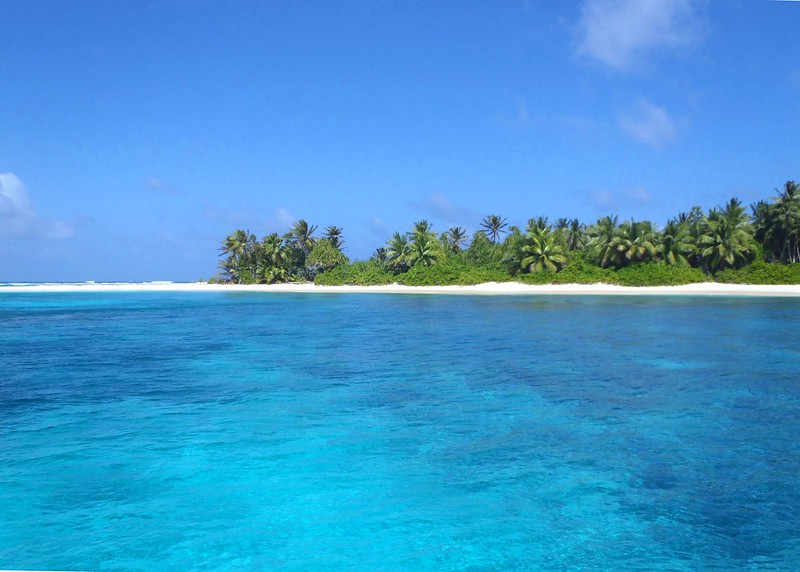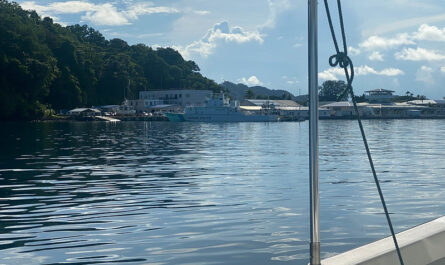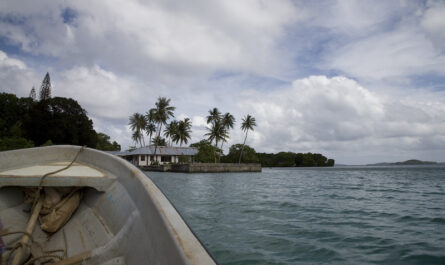Majuro Atoll, the vibrant capital of the Marshall Islands, is more than a geographical wonder; it is a dynamic community rooted in ancient traditions and cultural richness. Located in the Pacific Ocean, this ring-shaped coral atoll is a hub for cultural preservation and adaptation, offering a fascinating glimpse into island life that seamlessly merges the old and the new.
This article explores the traditions, daily life, and cultural heritage of Majuro Atoll while highlighting how the community adapts to modern challenges and opportunities.
1. The Geography and Importance of Majuro Atoll
Majuro Atoll is the largest urban center in the Marshall Islands, consisting of 64 islets surrounding a lagoon that spans approximately 295 square kilometers. Its strategic location and natural beauty make it both the political and cultural heart of the island nation.
A Lagoon-Centered Lifestyle
The lagoon is central to life on Majuro. Its calm waters provide fish, transport routes, and a serene backdrop for daily activities. The oceanic setting has shaped the community’s dependence on marine resources, fostering a unique way of life centered around sustainability and connection to nature.
Village Dynamics
Majuro is divided into several districts, with Delap-Uliga-Djarrit (D-U-D) serving as the main urban area. Despite urbanization, many residents maintain strong ties to their traditional villages on the outer islands, preserving customs and practices passed down through generations.
2. Language and Storytelling: The Backbone of Culture
The Marshallese language, or Kajin M̧ajeļ, is a cornerstone of Majuro’s cultural identity. It is an Austronesian language spoken across the atolls, and its preservation is vital for maintaining cultural continuity.
Oral Traditions
Oral storytelling is a cherished tradition in Majuro. Elders recount tales of creation, ancient voyages, and moral lessons, ensuring the transmission of cultural values and historical knowledge.
- Mythology and Legends: Stories about deities, spirits, and the formation of the islands are commonly told, offering insight into the community’s spiritual beliefs.
- Navigational Tales: As a seafaring society, many legends celebrate the achievements of ancient navigators who braved vast oceans using traditional knowledge.
Chants and Songs
Traditional songs, or jakeļ, form a vibrant aspect of Majuro’s culture. These songs, often performed during gatherings and celebrations, are accompanied by rhythmic clapping and dances, symbolizing unity and joy.
3. Traditional Navigation and Seafaring Legacy
Majuro’s heritage as a maritime society is reflected in its traditional navigation and canoe-building skills. These practices demonstrate the ingenuity and adaptability of the Marshallese people.
Stick Charts
Unique to the Marshall Islands, stick charts are handcrafted maps made of coconut fibers and shells. They represent wave patterns, currents, and island locations, enabling navigators to traverse vast ocean distances with remarkable accuracy.
Canoe Craftsmanship
The art of building outrigger canoes, or wa, is a revered skill in Majuro. Crafted from locally sourced wood, these canoes are lightweight yet durable, ideal for fishing, transport, and ceremonial purposes.
- Cultural Significance: Canoes symbolize independence, self-sufficiency, and a deep connection to the ocean.
- Modern Applications: Traditional canoe races and festivals celebrate this heritage, blending tradition with contemporary community events.
4. Family and Community Structures
In Majuro, family and community are central to social organization. The extended family, or bwij, is often matrilineal, with women playing significant roles in land inheritance and household management.
Role of Women
Women are highly respected in Marshallese society. They are custodians of cultural practices, such as weaving and cooking, and are instrumental in passing down knowledge and values to future generations.
Community Gatherings
Communal gatherings are integral to social life in Majuro. Events like weddings, birthdays, and funerals bring together entire communities, reinforcing bonds through shared meals, dances, and rituals.
5. Traditional Arts and Crafts
Majuro’s artistic traditions are a reflection of its resourceful use of natural materials and its creative spirit.
Weaving
Weaving is a celebrated skill, primarily practiced by women. Using pandanus leaves and coconut fibers, artisans create mats, baskets, and fans that are both functional and symbolic.
Shell Jewelry
The lagoon provides an abundance of shells, which are transformed into intricate jewelry. These pieces are valued for their beauty and cultural significance, often worn during special occasions.
Tattooing Revival
Traditional tattoos, once a common expression of identity and social status, are experiencing a revival in Majuro. These designs often carry deep cultural meanings, representing achievements, lineage, or protection.
6. Cuisine: A Taste of Majuro
Food in Majuro is a fusion of traditional ingredients and techniques influenced by modern imports. The local cuisine reflects the atoll’s reliance on the sea and its commitment to sustainability.
Local Staples
- Breadfruit: Often baked or fermented, breadfruit is a versatile and nutritious staple.
- Coconut: Used in cooking, beverages, and as a base for desserts.
- Fresh Fish: Grilled, smoked, or cured fish is central to the diet.
Feasting Traditions
Feasts, or manit, are important social events that showcase traditional dishes and communal values. Food preparation is often a collective effort, emphasizing the importance of cooperation and sharing.
7. Religion and Cultural Adaptation
Christianity, introduced by missionaries in the 19th century, is the predominant religion in Majuro. Churches are central to community life, serving as places of worship and social gathering.
Integration of Traditions
While Christianity has influenced many aspects of Majuro’s culture, traditional customs are still interwoven into religious practices. For instance, hymns are sometimes sung in the Marshallese language, and church events often feature traditional dances and foods.
Contemporary Challenges
Modernization and globalization are reshaping religious and cultural practices. Efforts are being made to balance these influences while preserving the core elements of Marshallese identity.
8. Eco-Tourism and Cultural Preservation
Majuro is increasingly recognized as a destination for eco-tourism, offering visitors a chance to engage with its natural beauty and cultural heritage.
Sustainable Tourism Initiatives
Eco-tourism programs in Majuro emphasize the importance of environmental conservation and cultural education. Activities include:
- Guided tours of traditional villages.
- Workshops on weaving and canoe-building.
- Snorkeling and diving in the pristine lagoon.
Cultural Centers
Cultural centers in Majuro provide visitors with insights into the island’s history and traditions. These centers play a vital role in preserving and promoting local heritage.
9. Climate Change and the Future of Traditions
Majuro faces significant challenges due to climate change, including rising sea levels and extreme weather events. These threats jeopardize not only the physical landscape but also the cultural practices tied to the land.
Community Resilience
The people of Majuro are actively addressing these challenges through education, advocacy, and sustainable practices. Traditional knowledge, such as the use of natural resources, is being leveraged to develop adaptive solutions.
Youth Engagement
Engaging the younger generation in cultural preservation is critical. Schools and community programs are incorporating traditional arts, language, and environmental stewardship into their curricula.
Conclusion: A Legacy of Resilience and Tradition
Majuro Atoll is a living testament to the strength and creativity of its people. Its traditions, from storytelling and navigation to weaving and communal feasting, offer a glimpse into a way of life deeply connected to nature and community.
For travelers, Majuro provides an opportunity to immerse oneself in a culture that values sustainability and heritage. By supporting eco-tourism initiatives and respecting local customs, visitors can contribute to the preservation of this unique island community.
As Majuro faces the challenges of the modern era, its traditions serve as a foundation for resilience and a source of inspiration for generations to come. Whether you are exploring its vibrant villages, learning about its maritime history, or marveling at its natural beauty, Majuro offers an unforgettable experience that celebrates the enduring spirit of the Marshallese people.



